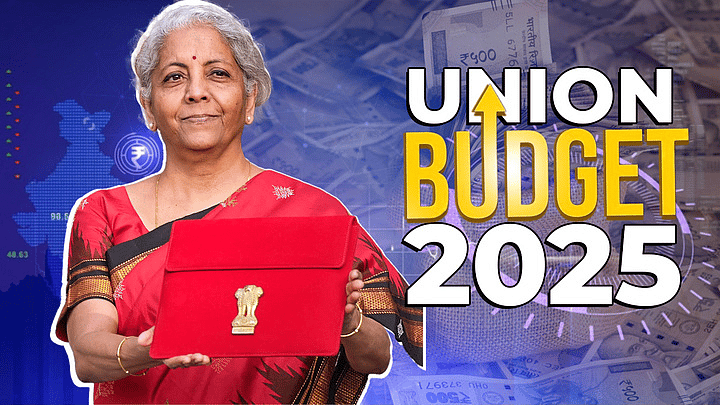The challenge for any finance minister in presenting a Union Budget is to balance multiple and sometimes conflicting objectives of growth stimulus, subsidies for the deprived sections, and yet balancing the books. This tightrope walk is difficult at most times, but against the backdrop of global turmoil, it becomes even more difficult. President Trump has slapped import duties against the Canadians and the Chinese.
The Chinese will try and dump their goods into countries like India. Trump’s policies are creating global nervousness, and hence there is a flight of capital toward the safety of New York’s bond markets. That creates a strong demand for the dollar, making it stronger. India, too, is facing a situation with the falling rupee and net foreign direct investment falling to zero.
Against this backdrop, the FM presented her eighth budget in a row, proposing to spend about Rs 51 trillion and expecting revenues of Rs 35 trillion. The gap is the deficit to be made up by borrowings. Even as the major highlight is the big cut in personal income tax, the budget does not lose sight of the need for fiscal prudence. As promised a few years ago, the fiscal deficit next year is aimed to go below 4.5 percent of the GDP.
This is a major milestone in India’s fiscal consolidation journey, achieved despite maintaining an average of 7% GDP growth and having increased capital expenditure for the past few years. The next year’s target of 4.4 percent fiscal deficit ratio is sought to be achieved despite foregoing an income tax collection loss of nearly Rs 1 trillion, thanks to the tax cut. It is also aided by freezing capital expenditure to remain the same as last year.
The maximum ceiling below which no income tax is to be paid has been raised to Rs 12.75 lakh. This is a huge jump from the earlier ceiling of Rs 7 lakhs announced in 2019. This cut is mainly addressed to the middle class, whose mention was made even by the President in her speech, as well as by the Prime Minister. By giving such a large tax exemption, millions will fall out of the tax net. This goes against the principle of widening the base of taxpayers. India has 80 million people filing their income tax, but only around 25 million pay more than zero tax.
The tax cut was necessitated due to sluggish growth in consumption spending, especially in urban areas. The middle class also has been complaining of high inflation eating into their purchasing power. Even though the tax has been cut, the FM expects total tax collection to go up faster than nominal GDP, which itself has been assumed to rise by about 10.5 percent next year. This is a heroic assumption given the global slowdown and turmoil and the sombre projection given by the Economic Survey.
India cannot ignore the precarious nature of its fiscal situation. Interest on the debt itself consumes 49 percent of all tax revenues of the Union government. The debt-to-GDP ratio has to decline. The high borrowing requirement, which will be nearly Rs 15 trillion this year, tends to put upward pressure on interest rates and crowds out private investment. Hopefully with a lower fiscal deficit next year, softening inflation and injecting liquidity in the banking system, the Reserve Bank of India can do its bit by reducing interest rates in its next meeting.
One of the major highlights of the budget is its continued push for regulatory simplifications, including a commitment to reducing business regulations and legal complexities. This was flagged in the Economic Survey, which effectively said that the government must keep a hands-off approach. Let the entrepreneur run his business and not be bogged down by the inspector raj and compliance burden. The survey advocated a trust-based regulation, whose contours will be visible as soon as a new committee has been announced.
A review of permits, clearances, and licenses aims to create a more business-friendly environment, which will certainly go a long way in reviving private sector investment. The FM also announced the removal of seven tariff rates, following last year’s reduction of a similar number. She has also promised a new Income Tax Bill, aimed at procedural simplifications. This, too, signals an intent to modernise tax administration and reduce litigation.
The budget has several sectorally focused initiatives on agriculture, tourism, aviation, and clean energy, including nuclear energy. It recognised the need to revive labour intensive manufacturing activities such as footwear, toys and agro-processing. How much investment will come into these sectors remains to be seen.
On balance, this is a workmanlike budget, which achieves some fiscal discipline and some tax-cut stimulus. It accepts the need to revive private sector investment by the long-term policy reform of reducing regulatory burdens and unshackling the entrepreneur. It avoids any big bang reforms since the global situation has too many imponderables. From her earlier speech in July, there were some expectations on an employment-linked incentive scheme along similar lines to production incentives.
The fact is that wages are stagnant because employment is not picking up. Job creation will happen only when half a million new small and medium enterprises are born. That calls for improving ease of not just running a business, but also of starting and closing. All of this hopefully will be the domain of the regulatory reforms committee’s recommendation. We will also need substantial net inward Foreign Direct Investment, which has dried up. The FDI not only brings in dollars but also know-how and management best practices.
Let us hope that regulatory reform gives importance to stability, consistency and predictability of investment policies. That itself will go a long way in reviving economic growth domestically, aided by India’s demography, urbanisation and the fast-growing digital economy.
Dr Ajit Ranade is a noted Pune-based economist. Syndicate: The Billion Press (email: [email protected])
